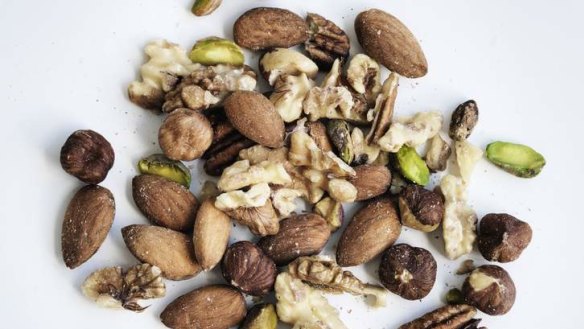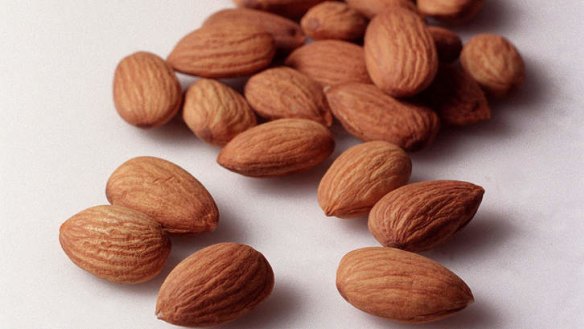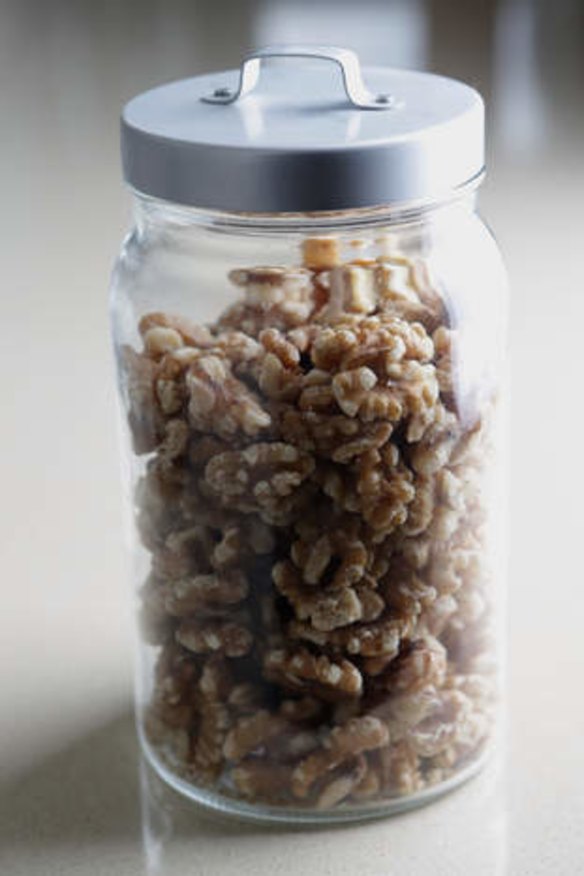Cashews, almonds, pistachios: how to go nuts for nutrition

What was once an apple a day to keep the doctor away may now also be adding a handful of nuts each day to keep heart disease, type 2 diabetes and even the weight monsters at bay.
Nutritionally, one of the greatest strengths of nuts is their high proportion of micronutrients such as zinc, copper, manganese, selenium and magnesium; nutrients that appear to work powerfully together resulting in a range of long-term health benefits. So the question is not whether to eat them, but rather, which types and how many to include each day to get all the nutritional benefits they offer.

Here are five of the best nutritionally.
Brazil nuts
Not as commonly consumed as almonds and walnuts, Brazil nuts can be thought of as a forgotten superfood. Brazil nuts have an exceptionally high amount of selenium, the mineral that plays a crucial role for the thyroid and optimal antioxidant functioning in the body. Studies have shown that adding a single Brazil nut to the daily diet is enough the raise the levels of selenium in the blood. Brazil nuts are also extremely rich in vitamin E, copper, magnesium and zinc. While a diet rich in selenium is related to a reduced risk of some types of cancer, including prostate and gastric cancers, supplementation of high amounts of selenium is contra-indicated, and for this reason, natural dietary sources of selenium and vitamin E are preferable. As such, particularly for males, adding a couple of Brazil nuts into any nut mix makes dietary sense. Brazil nuts are also higher in fat than other nuts, with almost 20g of total fat per 30g serve, hence the recommendations to consume them in moderation.

Pistachios
A serve of 30 pistachios, or roughly 30g, contains 15g of fat, 10g carbohydrates, 7g of protein and almost 3g of fibre, making them a nutritionally balanced snack choice or addition to salads or baking. Pistachios are also a source of the powerful antioxidant resveratrol, which is known to reduce inflammation and prevent damage to the blood vessels. Rich in vitamin B6, vitamin K, potassium and copper, the only issue with pistachios is having the strength to stop eating the whole packet. Shelling them will slow your eating pace and make portion control easier.
Walnuts
Of all the varieties of nuts available, the walnut has one of the highest concentrations of the plant source of omega 3 fat, alpha-linolenic acid (ALA), making it an extremely good choice for people with heart disease risk factors or type 2 diabetes. Walnuts are also a good source of the key nutrients zinc, iron, manganese, vitamin B6 and folate. Studies have shown that eating 30g (about 10) walnuts daily can help lower blood cholesterol levels. Walnuts make a great snack when enjoyed in controlled portions and also provide vitamin E, another nutrient known for its heart-health properties. Enjoy walnuts in salads, pastas and in baked goods but be aware that they become rancid quickly so look for the freshest options from supermarkets and fresh grocery outlets. You can keep them in the freezer to help preserve their flavour for longer periods. Another option is to buy walnuts in the shell, which is thought to further preserve the flavour and antioxidant content.
Cashews
Another popular snack, cashews are slightly sweeter than some of the other richer-tasting nuts and can be added to salads, stir fries or made into a tasty paste as an alternative to butter. Cashews have a similar nutrient profile to that of pistachios but with less fibre per serve and are best consumed in unsalted varieties. Particularly rich in vitamin K, which is linked to lowering blood pressure, copper, magnesium and folate along with the antioxidant squalene known to have a range of anti-cancer functions in the body. Again stopping at just 20 nuts, which will give you 730 kilojoules, 15g of fat and 5g of protein, may prove difficult and for this reason adding a controlled portion to your cooking may be one way to prevent overconsumption.
Almonds
A favourite with dieters, almonds are often considered a high-protein choice with almost 7g of protein per 30g serve, although this is a similar level to walnuts. Almonds are also packed full of fibre with more than 3g per 30g serve, along with good amounts of vitamin E, magnesium, calcium, iron and zinc. Almonds also have relatively high levels of antioxidants and research has linked their consumption to reduced insulin secretion in the body, and better blood glucose control as a result. If almonds are your nut of choice, dry roasted varieties are fine but be careful of varieties with added salt and remember that just 15-20 almonds is a serve that will give you almost 15g of fat, much of which is monounsaturated fat.
Susie Burrell is a nutritionist and dietitian.
The best recipes from Australia's leading chefs straight to your inbox.
Sign up